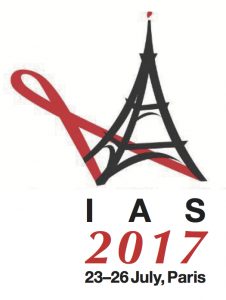Stillbirth rate in HIV positive women in UK/Ireland is double that of the general population
10 August 2017. Related: Conference reports, Pregnancy, IAS 9th Paris 2017.
 Polly Clayden, HIV i-Base
Polly Clayden, HIV i-Base
Stillbirth rate in HIV positive women in UK/Ireland was around twice that reported in the general population in 2007–2015, despite declines in vertical transmission and increases in women conceiving on ART and delivering with undetectable viral load.
These findings from the UK and Ireland National Study on HIV and Pregnancy and Childhood (NSHPC) were presented at IAS 2017.
The study authors noted that stillbirth has multifactorial and incompletely understood causes. They previously reported higher rates than in the general population between 1990–2006: 1.1% vs 0.5%. This period saw big changes in maternal HIV treatment and vertical transmission interventions.
The more recent analysis was conducted to explore the current stillbirth rate and risk factors in HIV positive women delivering in UK/Ireland between 2007–2015 (reported to NSHPC by December 2016).
Stillbirth was defined as a baby delivered at 24 gestational weeks or more showing no signs of life.
During the study period, there were 10,316 pregnancies in 8069 mothers: 75.4% of mothers were born in sub-Saharan Africa; 49.4% conceived on ART; 55% received a PI-based regimen and 24.5% NNRTI-based; there were 43 (0.4%) vertical transmissions; and 89 (0.9%) stillbirths.
There was no decline in rate of stillbirth reported to the NSHPC over this period, p=0.24. The Office for National Statistics for England and Wales reported a stillbirth rate of 0.5% during the same period of time.
Compared with live births, stillbirths were more likely to be male (58.21 vs 41.79%), delivered pre-term (median 33 vs 39 gestational weeks), small for gestational age (54.84 vs 21.12%) and have congenital abnormalities (14.75 vs 2.85%). But data on gender, small for gestational age and congenital abnormalities were missing for approximately 25, 30 and 31% of still births respectively.
In multivariate analysis, significant risk factors associated with stillbirth were: antenatal CD4 count <350cells/mm3 and mother being primiparous, older and originating from sub-Saharan Africa or other non-western European countries. Delivery year, ART at conception and antenatal ART class attendance were not significantly associated with stillbirth. See table 1.
| Risk factor | IRR (95% CI) | |
|---|---|---|
| Maternal age(years) | <28 | 1.00 |
| 28–32 | 3.38 (1.25 to 9.16) | |
| 33–36 | 3.57 (1.25 to 9.66) | |
| >36 | 4.12 (1.49 to 11.35) | |
| Parity | Primiparous | 1.85 (1.10 to 3.12) |
| Multiparous | 1.00 | |
| Maternal origin | Europe/WEWC | 1.00 |
| SSA | 3.26 (1.07 to 9.95) | |
| Other | 5.59 (1.49 to 21.48) | |
| Maternal CD4 count | >350 | 1.00 |
| <350 | 1.73 (1.05 to 2.86) | |
Key: IRR, incident rate ratio; SSA, sub-Saharan Africa; WEWC, westernised countries.
The authors pointed out the limitations to this study: NSHPC does not record data on other important risk factors for stillbirth eg maternal BMI, socio-economic status and smoking and there were limited data to classify stillbirth as antepartum or intrapartum. They also noted that details of stillbirths were under reported.
Reference:
Favarato G et al. Stillbirth in HIV-infected women delivering in UK/Ireland between 2007 and 2015. IAS 2017. 23–26 July 2017. Paris. Poster abstract MOPDC0104.
http://programme.ias2017.org/Abstract/Abstract/4703

